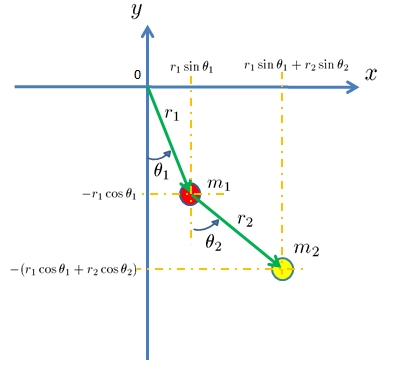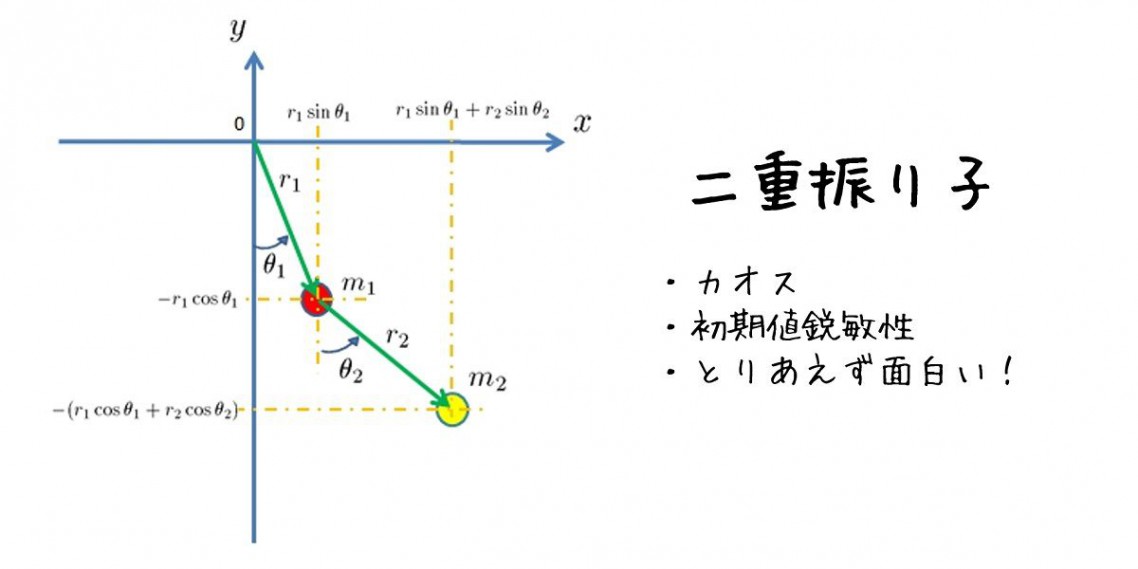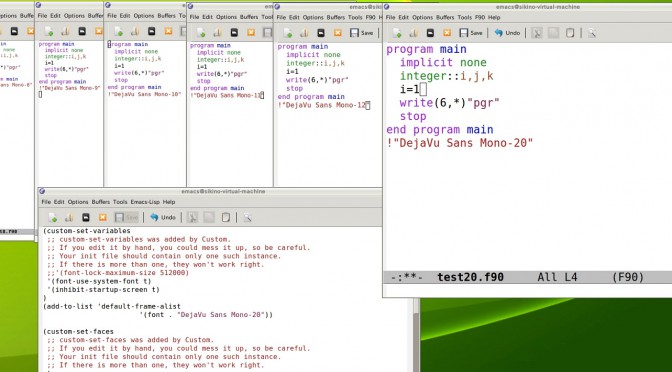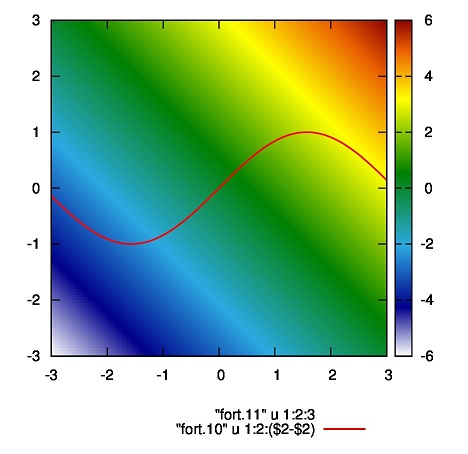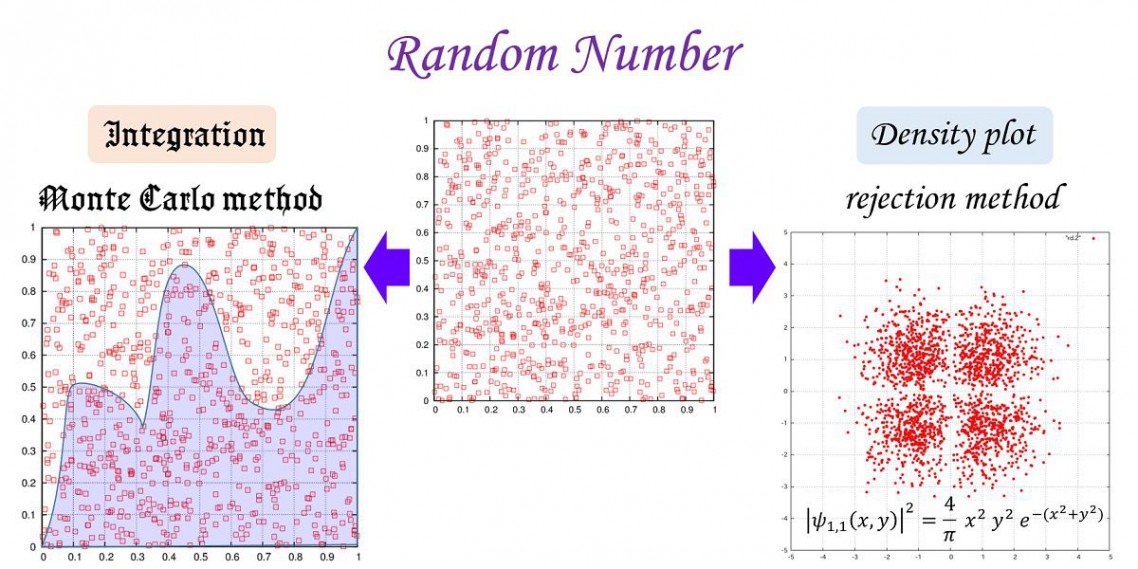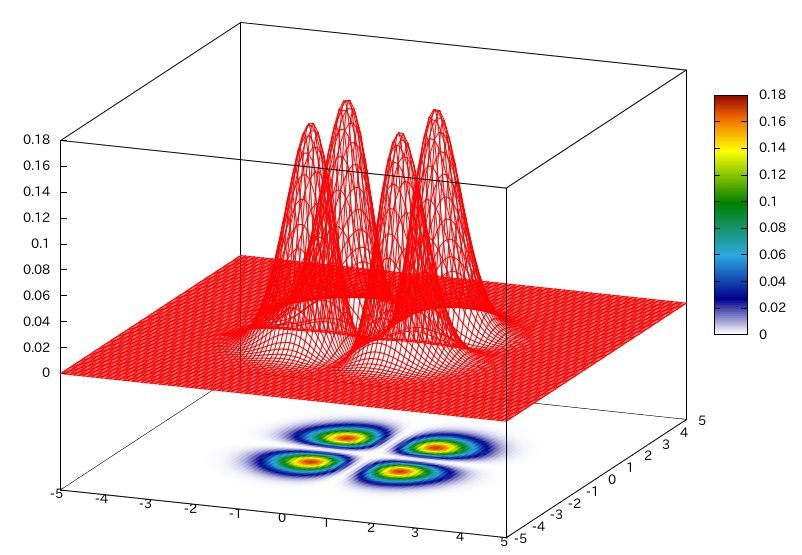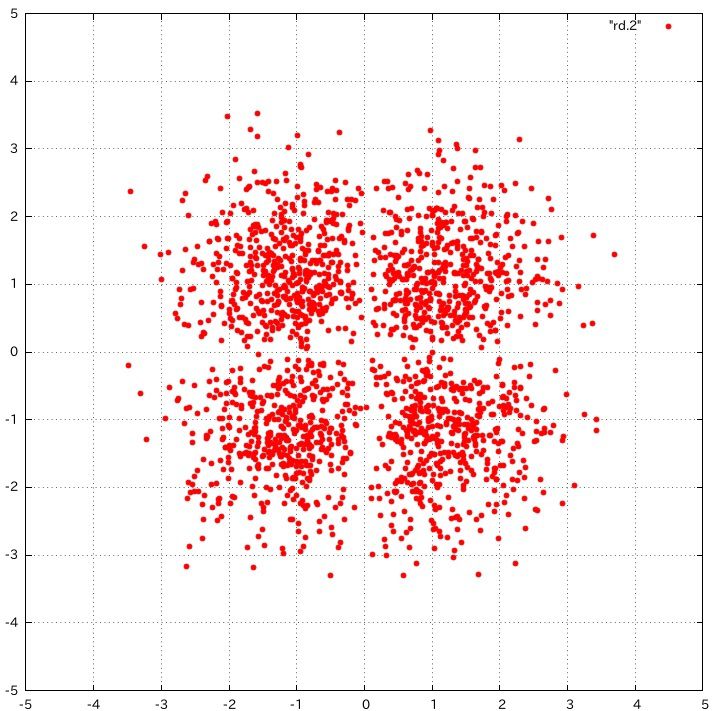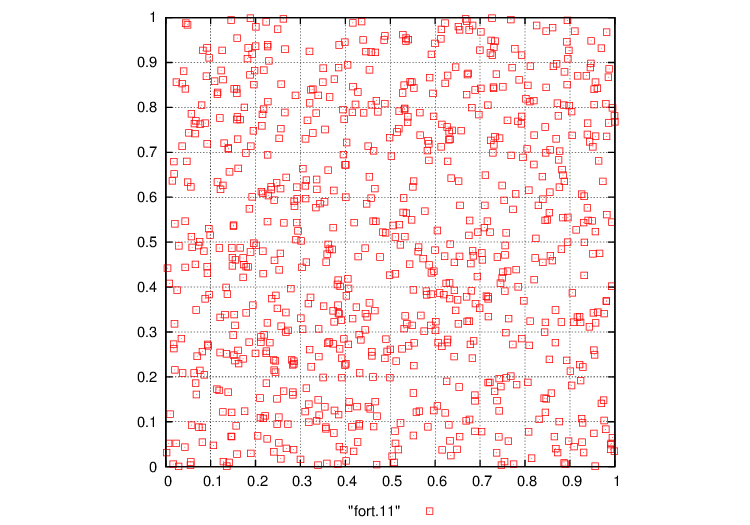covering designのt=2に相当、
La Jolla Covering Repository Tablesに全部載ってます…
リンク先クリックすればいいんだね。
Combinatorial covering designs に文献とかあるから、なんかもう・・・
もういいや
fortran90によるのコードはこのページの下の方です
だんだんと条件を付け加えて更新していくつもりです。n=9~10でm=3,4程度は厳しいです。
力技でやってみたよ!
主眼が回数になっているので、実際の組み合わせは?と気になってやったものです。
事の発端
コンピュータによる総当たりでは今のままではn=10位が限界です。
だんだんと改良して増やせていければ、と。
コードは後ほど僕に時間ができ次第、公開します。
より↓
念のための確認もかねて、計算は表の値-1から確かめて総当たりを行った結果です。なので具体的な組み合わせが載っているものは正しいはずです。
組み合わせの総数はおおよそ
\(\displaystyle \sum_{q=3}^{q^{Answer}} {}_{{}_nC_m}C_{q}\)
という膨大な数の組み合わせとなります。ここで\(q^{Answer}\)はプリクラ問題の最小回数です。
\(q=3\)はあり得ない、全てを検証する必要はない、など確実にわかる要素は多いですが、例えばn=9,m=3,解q=12を考えると
\(\displaystyle {}_{{}_9C_3}C_{12}=112,992,892,764,570 \ \ \sim 10^{14}(=100T)\)回
の計算が必要です。理想的な状況を考え、cpu10GHz,コア数10で並列処理で行う場合、計算時間は
\(\displaystyle \frac{10^{14}回}{10\times 10^{9}Hz\cdot 10\mbox{コア}}=1000[秒]\)
なのでぎりぎり計算できそうかなーくらいになります。
しかし、このあたりが限界で、n=10,m=3,解q=17になると、
\(\displaystyle {}_{{}_{10}C_3}C_{17}=189,916,591,435,396,829,640\ \ \sim 10^{20}(100E)\)回
の計算となります。先ほどの設定で行うならば、\(10^{9}\)秒~31.7年かかります。
スパコンの京(10PHz)をフルに使えるならば1000[s]で終わります。しかしそこで終わりです。n=11は…もう無理です。
効率のいい方法を考えない限り、解は得られません。
(3,2)=3
1 2
1 3
2 3
(4,2)=6
略
(4,3)=3
1 2 3
1 2 4
1 3 4
(5,2)=10
略
(5,3)=4
1 2 3
1 2 4
1 2 5
3 4 5
(5,4)=3
1 2 3 4
1 2 3 5
1 2 4 5
(6,2)=15
略
(6,3)=6
1 2 3
1 2 4
1 5 6
2 5 6
3 4 5
3 4 6
(6,4)=3
1 2 3 4
1 2 5 6
3 4 5 6
(6,5)=3
1 2 3 4 5
1 2 3 4 6
1 2 3 5 6
(7,2)=21
略
(7,3)=7
1 2 3
1 4 5
1 6 7
2 4 6
2 5 7
3 4 7
3 5 6
(7,4)=5
1 2 3 4
1 2 3 5
1 2 3 6
1 2 3 7
4 5 6 7
or
1 2 3 5
1 4 6 7
2 3 4 5
2 4 6 7
3 5 6 7
(7,5)=3
1 2 3 4 5
1 2 3 6 7
1 4 5 6 7
(7,6)=3
1 2 3 4 5 6
1 2 3 4 5 7
1 2 3 4 6 7
(8,2)=28
略
(8,3)=11
計算中…
(8,4)=6
1 2 3 4
1 2 5 6
1 2 7 8
3 4 5 6
3 4 7 8
5 6 7 8
(8,5)=4
1 2 3 4 5
1 2 3 4 6
1 2 3 7 8
4 5 6 7 8
(8,6)=3
1 2 3 4 5 6
1 2 3 4 7 8
1 2 5 6 7 8
(8,7)=3
1 2 3 4 5 6 7
1 2 3 4 5 6 8
1 2 3 4 5 7 8
(9,2)=36
略
(9,3)=12
計算中…
(9,4)=8
1 2 3 5
1 2 3 6
1 2 4 7
1 2 8 9
1 3 4 8
1 3 7 9
4 5 6 9
5 6 7 8
info)cputime=3.0415[s], Nc=10523209, com=1 2 35 115 126
(9,5)=5
1 2 3 4 5
1 2 3 4 6
1 2 7 8 9
3 4 7 8 9
5 6 7 8 9
(9,6)=3
1 2 3 4 5 6
1 2 3 7 8 9
4 5 6 7 8 9
(9,7)=3
1 2 3 4 5 6 7
1 2 3 4 5 8 9
1 2 3 6 7 8 9
(9,8)=3
1 2 3 4 5 6 7 8
1 2 3 4 5 6 7 9
1 2 3 4 5 6 8 9
(10,2)=45
略
(10,3)=17
計算厳しい
(10,4)=9
計算中(4日後くらい?)
(10,5)=6
(10,6)=4
1 2 3 4 5 6
1 2 3 4 7 8
1 2 3 4 9 10
5 6 7 8 9 10
(10,7)=3
1 2 3 4 5 6 7
1 2 3 4 8 9 10
1 5 6 7 8 9 10
(10,8)=3
1 2 3 4 5 6 7 8
1 2 3 4 5 6 9 10
1 2 3 4 7 8 9 10
(10,9)=3
1 2 3 4 5 6 7 8 9
1 2 3 4 5 6 7 8 10
1 2 3 4 5 6 7 9 10
(11,2)=55
略
(11,3)=19
(11,4)=11
(11,5)=7
(11,6)=
(11,7)=4
1 2 3 4 5 6 7
1 2 3 4 5 6 8
1 2 3 4 9 10 11
5 6 7 8 9 10 11
(11,8)=3
1 2 3 4 5 6 7 8
1 2 3 4 5 9 10 11
1 2 6 7 8 9 10 11
(11,9)=3
1 2 3 4 5 6 7 8 9
1 2 3 4 5 6 7 10 11
1 2 3 4 5 8 9 10 11
(11,10)=3
1 2 3 4 5 6 7 8 9 10
1 2 3 4 5 6 7 8 9 11
1 2 3 4 5 6 7 8 10 11
fortran90のコード。総当たりで調べます。
別にinputファイルが必要です。n:m=3:2以上の時は考慮していません。3回で終わるからね。
下の例はn=6, m=3に相当しています。(inputのrはmに相当します。)
qiは調べ始める最低回数、qeは調べ終わる最高回数です。
出力はこうなります。
M 35
q --> 3
q --> 4
q --> 5
q --> 6
q --> 7
number of calculation 1276464
cpu_time 0.905050993 [sec]
+------------+
1 2 3
1 4 5
1 6 7
2 4 6
2 5 7
3 4 7
3 5 6
+------------+
ここからfortran90のコード。gfortranで確かめています。
program main
implicit none
integer::n,r,qi,qe,qc
integer::i,j
real::t1,t2
integer,allocatable::groups(:,:)
n=7
r=3
qi=3
qe=10
allocate(groups(1:qe,1:r))
groups=0
call cpu_time(t1)
call pkprob(n,r,qi,qe,qc,groups)
call cpu_time(t2)
write(6,*)"cpu_time",t2-t1,"[sec]"
write(6,'(A)')"+------------+"
do i=1,qc
do j=1,r
write(6,'(i3)',advance='no')groups(i,j)
enddo
write(6,*)
enddo
write(6,'(A)')"+------------+"
stop
end program main
!==========================
subroutine pkprob(n,r,qi,qe,qc,groups)
!Covering Design t=2
implicit none
integer,intent(in)::n,r,qi,qe
integer,intent(out)::qc,groups(1:qe,1:r)
integer::q,M,ic,ncalc
integer::i,j,q2,k
integer,allocatable::ini(:),tmp(:),cgroup(:,:),pk(:,:)
integer,allocatable::choose(:)
integer::check1,nCr
integer::csign
! logical::csign,gsign
external::nCr
!Combination M=nCr
M=nCr(n,r)
write(6,*)"M",M
!csign : Sign of critical combination of array
!ic : Critical value of i which number of combination of combination
!qc : Critical value of q which number of combination of combination
!pk(1:n,1:n): Checking array if every number fill(1) combination or not(0)
!ncount(1:n): To check calculation number of times
allocate(ini(1:r),tmp(1:r),cgroup(1:M,1:r))
ini(1:r)=0
cgroup(1:M,1:r)=0
tmp(1:r)=0
do j=1,r
ini(j)=j
tmp(j)=ini(j)
enddo
!Substitute combination to cgroup.
do i=1,M
cgroup(i,1:r)=tmp(1:r)
call combination(n,r,ini,tmp)
enddo
deallocate(ini,tmp)
!csign : Sign of critical combination of array
!ic : Critical value of i which number of combination of combination
!qc : Critical value of q which number of combination of combination
!pk(1:n,1:n): Checking array if every number fill(1) combination or not(0)
!ncount(1:n): To check calculation number of times
csign=0
ic=0
qc=0
allocate(pk(1:n,1:n))
pk=0
ncalc=0
!q : We need to consider below combination.
! Example ) n=5, r=3 case.
!
!cgroup(i,1:r)
!i\r| 1 2 3
!----------
! 1 | 1 2 3
! 2 | 1 2 4
! 3 | 1 2 5
! 4 | 1 3 4
! 5 | 1 3 5
! 6 | 1 4 5
! 7 | 2 3 4
! 8 | 2 3 5
! 9 | 2 4 5
!10 | 3 4 5
!
!We have to choose q= 3 or 4 or 5 ...combination of "cgroup".
!Sum total of these combination can write D=_{nCr}C_q.
!Specifically,
!---choose q groups from cgroup
! +----q=3----+ +-----q=4-----+ +------q=5------+
! |choose(1:q)| | choose(1:q) | | choose(1:q) |
! | l | | | l | | | l | |
! |===|=======| |===|=========| |===|===========|
! | 1 | 1 2 3 | | 1 | 1 2 3 4 | | 1 | 1 2 3 4 5 |
! | 2 | 1 2 4 | | 2 | 1 2 3 5 | | 2 | 1 2 3 4 6 |
! | 3 | 1 2 5 | | 3 | 1 2 3 6 | | 3 | 1 2 3 4 7 |
! | 4 | 1 2 6 | | 4 | 1 2 4 7 | | 4 | 1 2 3 4 8 |
! | 5 | 1 2 7 | | 5 | 1 2 4 8 | | 5 | 1 2 3 4 9 |
! | 6 | 1 2 8 | | 6 | 1 2 5 9 | | 6 | 1 2 3 4 10|
! | 7 | 1 2 9 | | 7 | 1 2 5 10| | 7 | 1 2 3 5 6 |
! |...| . . . | |...| . . . . | |...| . . . . |
! |120| 4 5 6 | |210| 7 8 9 10| |252| 6 7 8 9 10|
! +-----------+ +-------------+ +---------------+
!
! If q=4, l=3
! We choose below combination, and check satisfy condition or not by "pk".
! 1 | 1 2 3
! 2 | 1 2 4
! 3 | 1 2 5
! 6 | 1 4 5
do q=qi,qe
write(6,'(A,i5)')"q -->",q
allocate(choose(1:q),ini(1:q))
choose(1:q)=0
ini(1:q)=0
do j=1,q
ini(j)=j
choose(j)=ini(j)
enddo
csign=0
do while(csign.eq.0)
!condition 1 to reduce calculation
check1=cgroup(choose(1),1)
if(check1.ne.1)exit
!condition 2 to reduce calculation
check1=cgroup(choose(2),1)
if(check1.ge.2)exit
!condition 3 to reduce calculation for less than n:r=3:2
check1=cgroup(choose(q),1)
if(check1.ge.3)then
pk=0
do q2=1,q
do j=1,r
do k=1,r
pk(cgroup(choose(q2),j),cgroup(choose(q2),k))=1
enddo
enddo
enddo
!memory calculation number of times
ncalc=ncalc+1
if(minval(pk).eq.1)then
csign=1
qc=q
endif
if(csign.eq.1)exit
endif
!go forward choose(1:q)
call combination(M,q,ini,choose)
enddo
if(csign.eq.1)exit
deallocate(choose,ini)
enddo
write(6,*)"number of calculation",ncalc
groups(1:qe,1:r)=0
do i=1,qc
do j=1,r
groups(i,j)=cgroup(choose(i),j)
enddo
enddo
return
end subroutine pkprob
!---------------------------------
subroutine combination(n,r,ini,arr)
implicit none
integer(8)::i,n,r,ini(1:r),bef(1:r),arr(1:r)
integer(8)::numx
logical::key(1:r)
bef(1:r)=arr(1:r)-ini(1:r)
arr(1:r)=0
key(1:r)=.false.
numx=n-r
do i=1,r
if(bef(i).eq.numx)key(i)=.true.
enddo
do i=1,r-1
if(key(i+1))then
if(key(i))then
if(i.ne.1)arr(i)=arr(i-1)
else
arr(i)=bef(i)+1
endif
else
arr(i)=bef(i)
endif
enddo
if(key(r))then
arr(r)=arr(r-1)
else
arr(r)=bef(r)+1
endif
arr(1:r)=arr(1:r)+ini(1:r)
return
end subroutine combination
!----------------------------------
function nCr(n,r)
implicit none
integer(8)::n,r,i,r0,nCr
r0=n-r
if(r.le.r0)r0=r
nCr=1
do i=1,r0
nCr=nCr*(n-r0+i)
nCr=nCr/i
enddo
return
end function nCr
